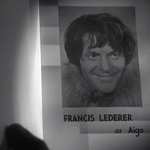 |
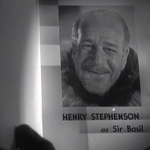 |
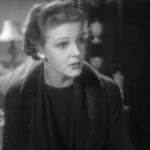 |
| Aigo Francis Lederer |
Basil Pemberton Henri Stephenson |
Joan Pemberton Elissa Landi |
| Released by RKO | Directed By J. Walter Ruben |
||
Proof That It’s Pre-Code
- Our lead ditches his Eskimo wife to go to Europe and chase a white woman. But don’t worry, kids, the white woman preserves her virtue!
Man of Two Worlds: And Neither Well
“Pardon me, sir, but why make all this fuss about a blinking eskimo?”
“Eskimo or no Eskimo, he’s one of the most interesting fellows I’ve ever stumbled across.”
There is a difference between someone ethnic and someone mentally handicapped. Sometimes old movies do not realize this.
While the pre-Code era gave us gems of racial understanding like The Bitter Tea of General Yen and fascinating screeds like Black Moon and The Mask of Fu Manchu that were unmistakeably racist but as yet nuanced, none of them are really in the same ballpark as Man of Two Worlds, a bizarre tale of a childlike, horny Eskimo and why he should be happy that he isn’t able to touch the porcelain beauty of a white woman.
That may sound strange, but it’s true: Man of Two Worlds is about teaching those of “lesser” races their standing in the white world. It’s deplorable, and, thanks to one spectacularly awful acting decision, an absolute dog to sit through.
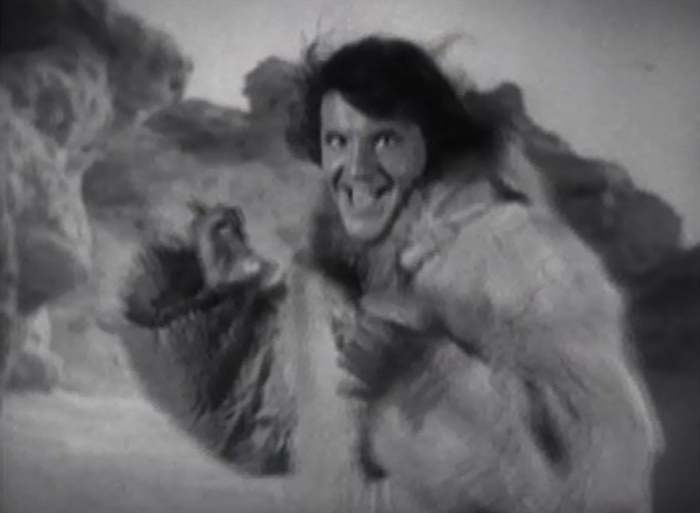
“How’m I doin’?”
Every problem that’s not in the condescending screenplay comes from our lead, Francis Lederer. An actor from Czech descent plays an Eskimo named Aigo in heavy brown make-up, and, according to Lederer’s interpretation of the character, Aigo is somewhat akin to a overenthusiastic circus clown. Every gesture is exaggerated, every syllable tuned and re-tuned wildly. When he sees a picture of a beautiful woman, he bugs out his eyes and sticks out his tongue.
Watching the wolf from a Tex Avery cartoon attempt to navigate the rocky waters of self important interracial romance is a lousy way to spend an hour. And yet Man of Two Worlds improbably clocks in at 96 minutes, 96 of the longest minutes ever produced for the screen.
The first half of the movie is mostly concerned with showing how Aigo is the alpha male of the Eskimo tribe. He’s the foremost hunter. He nails the hot Eskimo lady and impregnates her. Even the white hunters who come to trap animals marvel at his skill and ingenuity in the field. But everything changes when he catches a glimpse of Sir Pemberton’s daughter’s photograph.
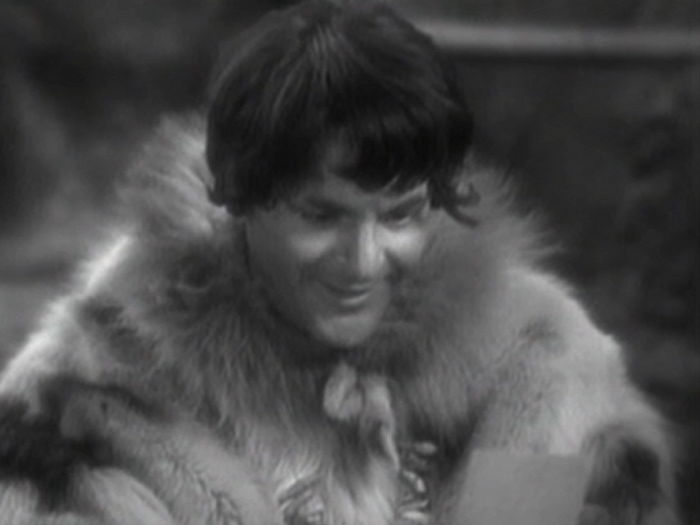
“Hey, baby, what’s a picture of a nice white girl like you doing in a cold place like this?”
Aigo becomes completely devoted to the photograph of Pemberton’s daughter, Elissa. When the captors puzzle over how to capture a polar bear, he tells them he can do it for a price: “You give white girl picture?!”
The white people routinely treat Aigo like a small kid. They patronize him at every opportunity and laugh at his broken English. Pemberton and the rest of the expedition also laugh at his obsession with Elissa, never giving any of Aigo’s desires the slightest of serious consideration.
Aigo is injured in his capture of the polar bear (all of the white people wait on the ship) and needs the white girl picture to get him through surgery. As a reward for his hard work and dedication, the expedition agrees to take him to England to meet the object of his affection.
Aigo tries to fit in, with his white companions chuckling over how he’s trying to ‘become white’. Aigo’s meeting of Elissa doesn’t go very smoothly, either, as she’s only polite to him at her father’s insistence. Aigo wants to spend time with her, “You like make Aigo much happy?!” She scoffs in private, “You know, he’s not half as savage as I expected an Eskimo to be.”
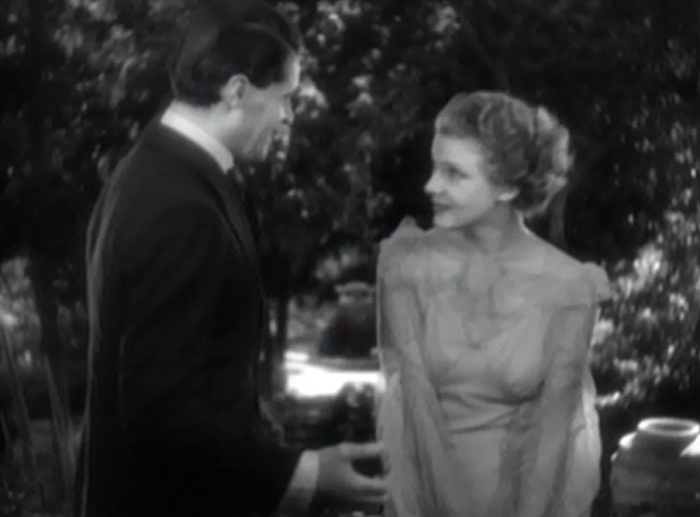
And now an improbable romance can… uh… fail horribly.
To try and redeem Aigo, his bastardized English sometimes renders into the form of unintentional poetry. He notes, “White like snow. Soft like seal. Warm like sun. Beautiful.” Doesn’t really melt my heart, but I ain’t no lady. Elissa touching his hand after this brief recitation is pretty much the highlight of her relationship, since she’s really in love with a rich playboy on the side.
This comes to cataclysmic conclusion when Aigo, after being given the slightest bit of whiskey, attempts to force himself on Elissa. She freaks out and tells him the truth about how she feels about him. Sir Pemberton also enters the room and quickly blames the fact that he was given drink for his advances– I guess what they always said about Eskimos and alcohol is true. Aigo is shipped back to Greenland with his heart broken, his once prized picture of Elissa now having its eyes scratched out.
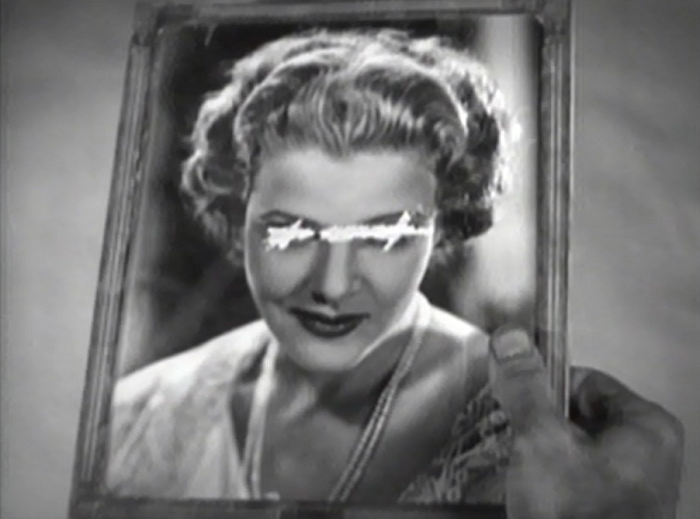
You know. Like a serial killer would do.
Aigo, reunited with his wife and small child, realizes that things are better this way. While white girls are super hot, you can’t touch that. You find your place in the world (as dictated by the color of your skin) and you stick in it. You can’t chase waterfalls, or, glaciers, or what have you.
You can tell Man of Two Worlds had a nice budget, though. The film makes use of a real polar bear for its animal scenes, and though on sound stage, the sets are expansive and good looking. The scenes that take place in England are also less confined to interiors, making it feel freer and more visceral, something that Aigo himself is surely feeling as well.
But really, the central performance in this film is so utterly awful and irredeemable, it’s a pain to even try and scrounge up compliments for it. Lacking a pulpy tone or a trace of nuance, Man of Two Worlds is creaky and laughable, an ‘important’ picture whose moral and central performances are now offensive and outdated. It’s a rare movie to find, and here’s my suggestion: don’t find it.
Trivia & Links
- The film’s opening is done via a man opening up a book. The opening actually shows the full shelf, with Man of Two Worlds sandwiched between four other novels. Notably, two of them have their own pre-Code adaptions: Little Women (1933) and Of Human Bondage (1934). The other two novels pictured, The Devil’s Disciple and Green Mansions would also get film adaptions, but not for a few decades afterward.
Gallery
Hover over for controls.
Awards, Accolades & Availability
- This one is fairly obscure. It showed up on TCM, and I got a copy of it from Cliff over at the splendid Immortal Ephemera. Thanks Cliff!
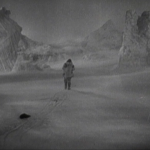 |
Comment below or join our email subscription list on the sidebar!Home | All of Our Reviews | What is Pre-Code? |


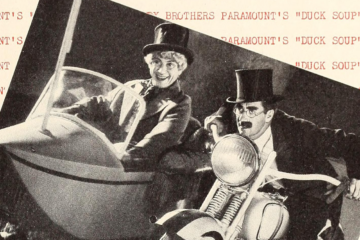


6 Comments
Caren's Classic Cinema · February 4, 2014 at 3:04 am
Hi Danny, I hope you and your family feel settled now. I can’t imagine moving so far away. Anyway, I enjoyed reading this entry. And I like the two main actors too. I never thought of writing my own personal reviews before but got to thinking I should “join the classic film writers club” and try my hand at it. So when you have some free time, take a look at my site. It’s not nearly as savvy as yours, but it will do. This May Toronto Film Society won’t be showing pre-Codes at our festival 🙁 but it should still be fun as the theme is Comedy (a few pre-Codes are tucked in there). Take care and best regards, Caren
Danny · February 6, 2014 at 12:14 pm
I’m enjoying your blog a lot– tons of great details! Thanks for the comments Caren, and I hope things are going well on your end as well. And it’s understandable about the film society– you can’t show pre-Codes all the time. No matter how many of us would be cool with that. 😉
Marsha Collock · February 6, 2014 at 2:52 am
Oh boy – this sounds awful and hilarious. I think a viewing with a glass of wine might do the trick (except I might throw the glass at the screen and that would be bad). Thanks for the chuckles!
Danny · February 6, 2014 at 12:07 pm
Sure thing Marsha! This one is definitely a prestige picture trainwreck, where it seemed like a noble book to adapt and a tale of racial strife– but good god, the central performance is damned bad. I would need wine to watch it again myself, though I don’t think I’d stop at a glass.
Patricia Nolan-Hall (@CaftanWoman) · February 6, 2014 at 11:15 pm
Sounds like I’d better avoid this one if I want to retain my good opinion of Francis Lederer.
Danny · February 8, 2014 at 11:33 pm
Maybe I’m not being generous, but, uh, yeah, it might be for the best to skip.
Comments are closed.